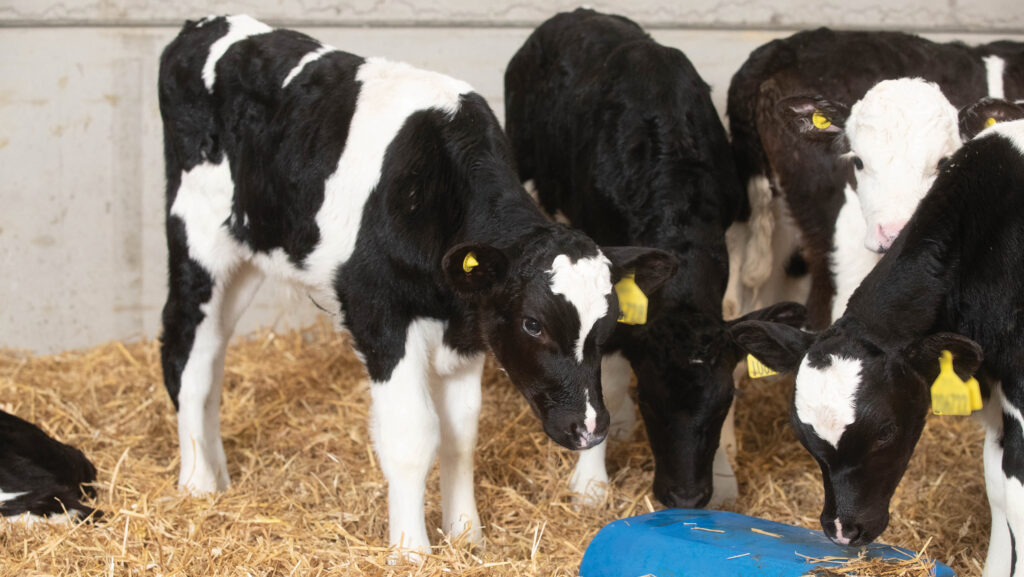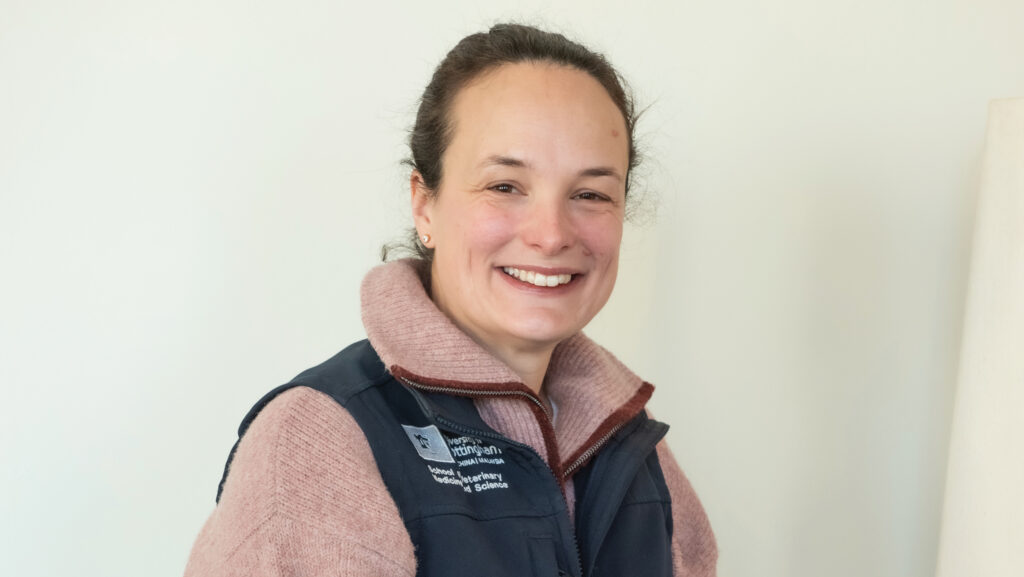Why don’t more farmers use pain relief for sick calves?
 © Tim Scrivener
© Tim Scrivener Concern over managing the use of antimicrobials on-farm and a lack of understanding around the effectiveness of non-steroidal anti-inflammatories (NSAIDs) are preventing use of these drugs as standard in treating sick calves.
See also: Why a simple, repeatable system is key for calf rearing
A University of Nottingham research survey discovered that only 40% of farmers routinely used them for calves with diarrhoea, and 65% of farmers used them for cases of bovine respiratory disease (BRD).
Yet NSAIDs play a vital role in pain relief, reducing inflammation in the body and bringing down the high temperatures associated with sickness.
They are the equivalent of giving Calpol (a source of paracetamol) to kids for teething troubles or taking ibuprofen at the first sign of feeling a bit “off-colour”.
The aim is to avoid a doctor’s visit, says vet and researcher Dr Ginny Sherwin, who is clinical associate professor in farm animal medicine at the University of Nottingham.
She thinks NSAIDs should be part of first-line treatment for the two common calf diseases, diarrhoea and BRD, as both cause pain and a high temperature.
“If in doubt and you think a calf is ‘not quite right’, then give it an NSAID. Sick calves don’t want to eat, drink or do anything. The quicker they return to normal, the less of a growth check they get,” she says.

Ginny Sherwin © Phil Weedon
Permanent lung damage
Long-term consequences of respiratory disease are clear: scarring to the lungs caused by the body’s defence response in trying to get rid of the cause.
“We need to limit this damage because when the lungs are scarred, they are unable to do their job properly and there is reduced oxygenation of blood, which then reduces the efficiency of the body to utilise energy supplied by the diet,” explains Ginny.
“The result is less output, a reduction in growth rates and, longer term with dairy heifers, a lower yield. Permanent lung damage limits performance.”
Also, BRD is mostly caused by viruses, which means antibiotics do not work. This is where administering NSAIDs is really important, alongside giving fluids.
Similarly, most causes of diarrhoea are a virus or protozoa and, again, antibiotics are only used to deal with a secondary infection.
Ginny says: “Calves need NSAIDs – they are not to replace antibiotics, but to be used alongside them [and other medicines] and will improve calf welfare and reduce long-term damage according to how speedily you detect disease.”
Barriers to use
Farmers who say they use NSAIDs report a cost benefit and that calves soon “pick up”. This means price is not a barrier to their use – particularly when 1ml of the drug can be bought for as little as 82p, says Ginny.
So what prevents uptake on-farm, when previous studies have suggested that more than 75% of farms experience these calf diseases, with at least 50% of farmers recording calf mortality within a 12-month period?
Ginny says their initial research identified some barriers that hinder the wider adoption of NSAIDs, and the next step is an online survey (see “University of Nottingham research survey” in box below) to try to understand more about what influences on-farm treatment decisions.
So far, she says they have learned that a big factor is the attitude to calves within the farm business, and whether they are considered a priority to “whoever pays the bills”, or if the focus is on the milking cows.
This will affect how much time, effort and drug use goes to treating sick animals.
It does not help when calf rearing is seen as a low-end job, given to the youngest, least-skilled and least-experienced employee.
“We are trying to understand what motivates people to improve animal outcomes, and what they class as ‘normal’ on their farms to be able to support them,” she says.
Stockmanship skills
Another area of concern is the perception of treatment procedures, what NSAIDs do, and how their use relates to the farm’s antimicrobials strategy.
Ginny says it is more about using drugs responsibly, rather than following a “no-injections” policy.
What is important, she says, is to understand the impact that NSAIDs have and know when to administer them.
This requires good stockmanship skills to be able to detect signs of disease early.
In the absence of high-tech collars or cameras, someone needs to be able to distinguish when a calf becomes poorly, such as stopping play behaviour or changes to eating and drinking patterns.
“These things happen a few days before clinical signs,” she points out.
Aside from the skill and experience of the calf rearer in interpreting the signs and changes, there needs to be guidance, a second opinion or a farm protocol that determines when and how to administer treatment.
As well as training, this should include ready access to the drug in the calf shed (not the cow medicine cupboard or farmhouse), appropriate syringes and good handling facilities to catch and treat sick calves.
Farmer input
While Ginny believes livestock farming needs to use NSAIDs more routinely than it currently does, she is aware that there is a gap to bridge between research and practice that will improve calf health and public perception of welfare.
The second part of the project she is leading involves a 20-minute online survey of calf rearers to find out more about attitudes to treating calves.
“We now want to work out how to get changes on-farm. What can we do to get past the barriers, traditions and farmers’ beliefs of what is normal on their farms?
“What can we do to help improve understanding around helping to improve the calf’s immune response?”
University of Nottingham research survey
The University of Nottingham research survey is investigating the factors affecting NSAID use in calves, and asks: what do you think is the right way to treat sick calves?
It is anonymous and confidential and takes just 20 minutes to complete – with a chance to win a £50 voucher.
All calf rearers – whether farm employees or owners – are invited to complete the questionnaire.
